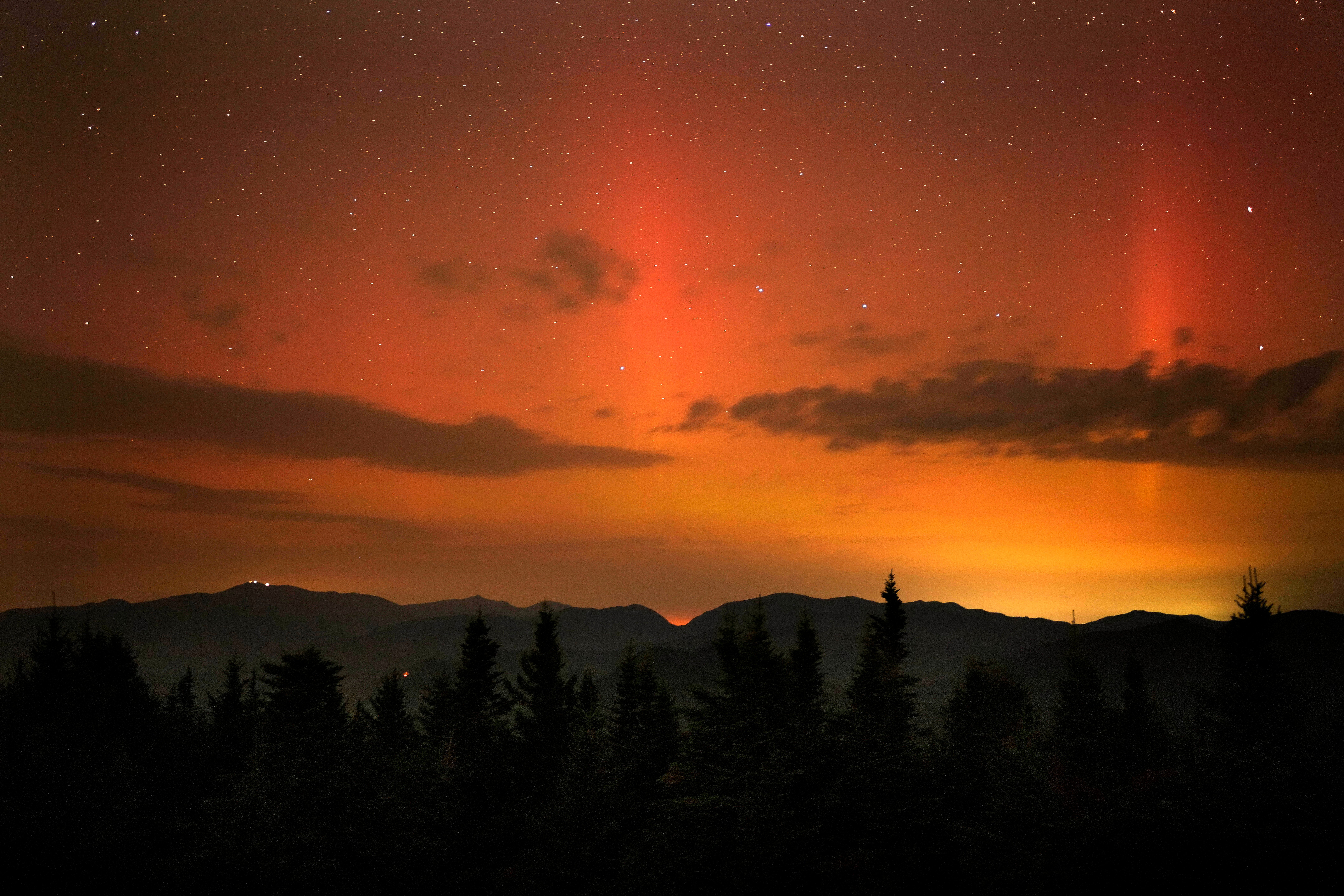Stargazers share ‘wild’ images of northern lights seen over UK, US and Russian skies
Those who missed the display may still have a chance to see it on Friday night

People in several parts of the UK, US, Canada, and Russia have reported seeing spectacular northern lights across the night sky on Thursday.
People in Scotland, Northern Ireland, Wales and England, as well as some living in parts of Canada, the US, and Russia, took to social media to share images of northern lights.
The UK Met Office had predicted that there was a good chance of seeing the space weather phenomenon late at night on Thursday.
Auroras occur when charged particles unleashed from the Sun collide with gases in the Earth’s upper atmosphere, creating colourful displays in the sky, especially around the planet’s magnetic north and south poles.

In the northern hemisphere, these are called aurora borealis, and cover latitudes between 60 and 75 degrees.
When the Sun’s activity is strong, the light display tends to expand to a greater area in the sky, and can be seen even as far south as the UK.
“We’ve had a coronal mass ejection from the sun in the last few days that arrived to Earth this morning,” meteorologist Jonathan Vautrey said.
“The geomagnetic activity is already happening, but it’s not dark enough to see anything. The activity will be continuing throughout this evening and there’s a chance of seeing it,” he said.
The colour of the display depends on the gas in the atmosphere being excited by the charged particles, and on how much energy is being exchanged between the two.
For instance, oxygen emits either a greenish-yellow light or a red light while nitrogen tends to give off a blue hue.
Scientists are still trying to figure out what gives different auroral displays their shapes.
The different shapes of the light display may depend on where in the Earth’s upper atmosphere the charged particles enter and also on what caused them to precipitate into the atmosphere, according to Nasa.
A clear sky in many parts of the UK made for ideal viewing on Thursday despite colder weather.
Those who missed the lights on Thursday may still have a chance to see it on Friday night into Saturday, the Met Office said, adding that the aurora may be weaker.
Join our commenting forum
Join thought-provoking conversations, follow other Independent readers and see their replies
Comments